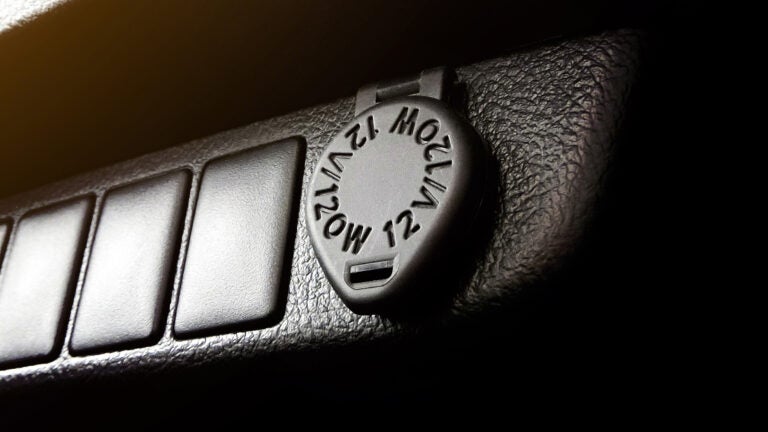Auto Q&A: Careful when altering truck’s power outlet
Can it be upgraded or replaced with something more capable?

Q: I’m incredibly frustrated with the power outlet in my 2016 F-150. It can only operate tiny things such as a phone or a laptop charger, but it blinks and fails to operate my cordless multitool battery charger or a small air compressor. Can it be upgraded or replaced with something more capable?–Adam D.A: Power inverters are cool gadgets, and it is great to have one along in a vehicle to make available small to moderate quantities of 120 volt household power. The problem is that to make much more than the 400 watts, your built-in inverter requires a well-ventilated cigar box size or larger device — which is difficult to fit within the instrument panel — as well as very thick power cables. And you have to take care to only operate it when the engine is running, to maintain battery charge.Many years back, I installed a 1200 watt power inverter under the back seat of our Silverado to recharge a computer, run a crock pot and operate a small chest freezer in order to bring frozen fish home from Alaska. This required running very thick cables (pinkie diameter) directly from the battery under the truck and up through the rear cab floor. A very large (200 amp) fuse was employed to protect the circuit, and great care was used to route and protect the cables from chaffing on anything metal. The system works great, although one must absolutely remember to turn off the inverter each time the truck is parked, to avoid battery run-down.The thing about power inverters is that in order to change 12 volts DC into 120 volts AC, there will be 10 or more times the current in the 12 volt side of the system (cabling to inverter) than what the 120 volt side can provide at the outlet (volts times amps equal watts). This is why the cables need to be huge/short, and the engine needs to be running (the car/truck battery would run down very quickly without continual charging).Please don’t consider mounting the inverter under-hood and bringing the 120 volts into the cab. The 12 volt cabling could be a bit shorter/easier to route, but the under hood temperature is too high for the unit, and it’s too dangerous to run the 120 volt cord past so many metal obstacles.
Corrosion, especially in winter, can drain air from tires
By Bob Weber, Chicago TribuneQ: The tires on my 2007 Highlander have gone flat or at least lost enough air to set off the “flat tire” warning six times in the last four years. I’ve never had this happen on any other car, and I’ve been driving for over 50 years.I take it in, and they say it’s corrosion on the wheel and take care of it. It only happens in colder weather. The front tires were replaced seven years ago and have 45,000 miles on them.The rear tires were replaced five years ago and have 31,000 miles. I keep my cars for at least 10 years, and this started happening when the tires were only two and four years old, respectively.I don’t know of anyone else having this problem and wonder if you have any insight. I have 88,000 miles on my car.— L.C., Park Ridge, Ill.A: Corrosion is an industry-wide problem, particularly with alloy wheels. And it is especially common where they salt the roads. Buffing off the corrosion and applying a tire mounting compound are a couple solutions short of replacing the wheels.Q: I have a 2016 Toyota Highlander (Limited Edition) and a fan that seems to be under the back seats often stays running hours after the car has been turned off. The only way I can turn it off is by starting the car and immediately turning it off again. The dealer says it’s normal and it’s clearing the exhaust system, but I say it’s a problem that needs fixing. Any thoughts?— D.S., Lake Barrington, Ill.A: About five hours after you park the vehicle, the evaporative emissions system (not the exhaust system) performs self-check for leaks. What you hear is a pump that pressurizes the system, which is then observed for a pressure drop, indicating a leak. Because most drivers park their cars overnight, this plan makes sense.The test is interrupted by switching on the ignition or removing the gas cap, but I advise against that and suggest allowing the test to complete.Q: For cars that don’t have blind spot warning systems, the driver should:
- Adjust the seats and rear-view mirror as usual.
- Lean over and place head against the driver’s side window.
- Adjust the outside mirror so you are just seeing the edge of his or her car.
It may take some fine tuning depending on the height of the driver and position of the seat. But if done properly when a car overtakes and passes on the left side, as the image in the main rear-view mirror begins to disappear, it will start to appear in the outside mirror. This pretty much eliminates the driver’s side blind spot. For the right-side blind spot, I adjust the convex mirror to the full outboard position.— D.G., Darien, Ill.A: I first reported this method in a feature back in 1995 when the Society of Automobile Engineers published a paper showing the better method for setting the mirrors. Since then the method has been circulated in many publications and on the Internet. At first it looks weird to see the guard rail and stuff seemingly moving and not seeing the road, but you will get used to it. The new warning systems and even blind spot mirrors also help.








Conversation
This discussion has ended. Please join elsewhere on Boston.com